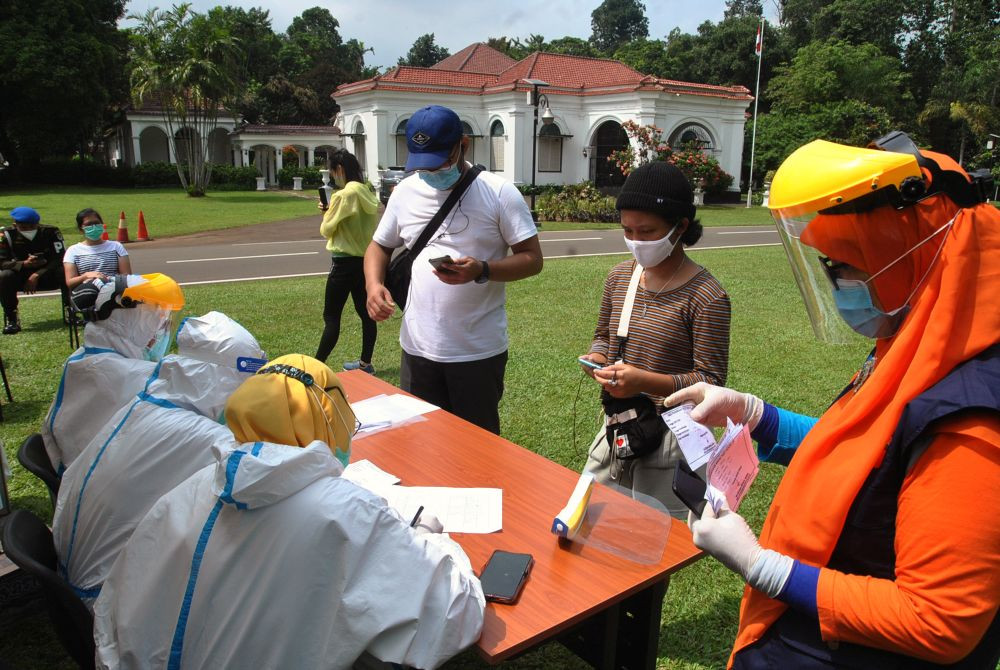Mayor promotes World Heritage status for historic Bogor gardens
The Bogor Mayor is pushing for the Bogor Botanical Gardens, which was founded in 1817, to be designated as a World Heritage Site.
Change Size

M
ayor Bima Arya of Bogor, West Java, has pushed for the designation of the Bogor Botanical Gardens as a World Heritage Site following a recent visit to the United Nations Educational, Scientific and Cultural Organization (UNESCO) headquarters in Paris.
During his visit, Bima met with Indonesia's Permanent Delegate to UNESCO Ismunandar, and their discussion included the gardens' designation as a UNESCO World Heritage Site.
In a written statement, Bima explained that the Bogor Botanical Gardens was the largest botanical park in Southeast Asia and held a very valuable history, especially in the development of science and research in Indonesia, as well as the world.
“We want to push the declaration of the Bogor Botanical Gardens as a world heritage,” said the mayor.
He said Ismunandar responded positively to his call and would give an update on progress as soon as possible.
Enny Sudarmonowati, a former deputy head of life sciences at the now-defunct Indonesian Institute of Sciences (LIPI), who was among the initial proponents for the heritage application, said that the gardens has benefits not only for Indonesia but also for the world.
“One of the most significant part of the gardens is the Treub Laboratory, which was an important research [facility] during the Dutch colonial era,” Enny told The Jakarta Post on Tuesday.
Enny, who is currently lead researcher at the Genetic Engineering Research Center of the National Research and Innovation Agency (BRIN), has also proposed that BRIN form a joint team for the bid that included the Bogor municipal and West Java administrations, the Education, Culture, Research and Technology Ministry, as well as NGOs and community representatives.
She said there were a few more steps left in the process, namely improving the gardens' nomination documents in accordance with suggestions and corrections from the UNESCO World Heritage Centre and then submitting the voluntary submission for a third time in September for another review.
If the submission gets the green light, a team working with the education ministry will respond, and the formal application can be accepted as soon as February 2024.
According to the UNESCO website, World Heritage is a designation for places on Earth that have extraordinary universal value to humanity. Inclusion of a site on the World Heritage List helps increase its protection, so it can be appreciated and enjoyed by future generations.
UNESCO World Heritage Sites include the Pyramids of Egypt, the Great Barrier Reef in Australia, the Galápagos Islands in Ecuador, the Taj Mahal in India, the Grand Canyon in the United States and the Acropolis in Greece.
The Bogor Botanical Gardens was first proposed for the World Heritage List on Sept. 25, 2017.
In 2019, it was included in the tentative list of UNESCO World Heritage Sites among 20 Indonesian national parks, areas and buildings, including the Kota Tua (Old City) area in Jakarta, Raja Ampat in Papua and Bunaken National Marine Park in North Sulawesi.
Founded in 1817 by the Dutch colonial government, the gardens thrived under the leadership of many renowned botanists including Johannes Elias Teijsmann, Rudolph Herman Christiaan Carel Scheffer and Melchior Treub.
Since its foundation, the Bogor botanical garden has served as a major research center for agriculture and horticulture.
The garden is home to more than 12,500 specimens of 3,200 kinds of plants, some of them extremely rare, such as ebony, which is sought after for its luxuriant and colorful grain, and Rafflesia patma, which attracted international attention when it bloomed in 2010, the first time since 1930. (dre)









